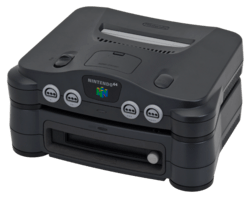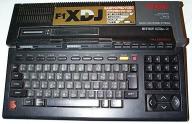How To Be A Japanese Import Gaming Poser

As a retro gamer, it’s inevitable that you have to acknowledge games from other countries, especially Japan. Why? Because many of the foundations of gaming began in the land of the rising sun and lets face it, there’s just something intriguing about integrating completely foreign languages and concepts to a domestic gaming collection. Well and there’s that whole thing about a long list of amazing games that we never saw on our shores. It wasn’t until this console generation that gaming started to go region free (unless you’re talking portables, which ironically just recently started segmenting by region after decades of being region free), and even now it’s really only the PS3 and 360 with plenty of exceptions. Before that games were segmented into different regions for distribution, licensing, and localization, resulting in a diverse list of releases from country to country. On a macro level your release decisions were segmented into three major regions: North America, Europe, and Japan. Import gaming skates an odd line in America because Europe has the common language (English) but a completely different broadcast standard (covered here) that requires special modifications and/or hardware to play games on. Japan has a language many Americans can’t understand (and more importantly in retro games, read) but has similar broadcast standards making most games essentially plug and play. As a result you’re more likely to import a Japanese game than a European game, most likely choosing an action platformer or fighting game over, say, a high-end RPG. But limiting yourself to just those games means all you’re going to play are licensing titles from the Super Famicom like Ultraman or PS1 games like Dragonball Z. That’s where this guide comes in – it’s a cheeky, sarcastic look at the elitist gamer that thrives on Japanese titles and gives you starting hints at how to pretend you are a Japanese gamer in the know. Those of us who love Japanese gaming are guilty of at least a few of these in our lives and who knows, maybe it’ll even give you the starting point you need to enjoy Japanese gaming.
1.) Always reference Japan instead of America
There is no more NES, Super NES, and you’ve no longer even heard of a Turbografx-16. Nope, instead you know them as the Famicom (or Family Computer), Super Famicom, and PC-Engine. The Genesis is the Mega Drive and you never played an Atari VCS/2600, you had an MSX (Microsoft Personal Computer). Everything came out earlier than you know, like the Famicom’s 1983 release and Legend of Zelda coming out in 1986 along with Dragon Warrior (we got it in 1989). In fact, there is no Legend of Zelda or Dragon Warrior, they’re now Zelda no Densetsu and Dragon Quest, but we’ll get to the names of games later on. This is the first step in becoming a true Japanese gaming genius: reference only Japanese console names and finish every fact based on a game with “in Japan” so that those listening are aware you know exactly what’s up.
2.) Know the Games
This is a twofold requirement because you not only have to know the proper names of titles in Japan (including how to pronounce them), but also knowing the coveted list of “secret best” games we never got in America. As I hinted at above, games aren’t necessarily called the same thing in Japan as America and in many cases Japan had more sequels than we did. Final Fantasy didn’t just have a single release on the Famicom, Japan also got the lackluster Final Fantasy II and decent Final Fantasy III, which are not the same as the American counterpart. The US release of Final Fantasy II is actually a dumbed down shortened version of Final Fantasy IV and Final Fantasy III is Final Fantasy VI – no longer can you refer to Final Fantasy II or III as 16-bit games, they are now permanently IV and VI to your savvy Japanese-centric mantra and you refuse to call them anything else, even if it confuses your friends (what do they know). Many games in Japan have shortened names for ease of reference that are different from America. Dragon Warrior is actually Dragon Quest in Japan (it was later changed here with Dragon Quest VII), but it’s DraQue (pronounced “draw-kw-ay”) for short. Additionally Super Mario Bros is SuMari (“sue-ma-ree”) and of course Seiken Densetsu (the Mana series) is SeikenDens (“say-ken-dens”), so you are also no longer allowed to pronounce the full name of this and many other games, nor should you ever explain discrepancies like the fact that SeikenDens 2 is Secret of Mana. On that note, always reference only the Japanese franchise and pretend the American version doesn’t exist – no longer does Castlevania, Gradius, or even Street Fighter Alpha exist, they are known as Akumajo, Nemesis, and Street Fighter Zero. It’s also important to know that in Japanese “L” is pronounced like “R” and visa versa, so be sure and do this every time, even with games like Gradius, which are still pronounced with the “R” sound in Japan (although you shouldn’t have that problem since it’s now Nemesis, right?).
In addition, it’s important to know many of the hot topic games that retro/import gamers will consistently reference when discussing the titles that we so desperately missed out on in America. I must note that these games are actually quite remarkable for most players, but almost all of them can be played in a fan translated version via emulation with ease (and for free), assuming you can handle the loose interpretation of the law that comes with it. First and foremost is the first game in the Earthbound series, which is Mother in Japan, and often referenced as Earthbound Zero by gamers. This fully translated but never released NES game has a strong cult following in both America and Japan, making Mother top of the must-own titles for the import gamer (it’s a bit slow-paced though, so perhaps you should opt for the Japan-only GBA collection that includes Mother and Mother 2, which we got in the form of Earthbound in America). Mother 3 also never saw our shores so despite an easily found translated version online, you should instead proudly announce you have the imported Japanese version. SNES had a massive bunch of games we never saw over here, but the biggest ones have to be Final Fantasy V and despite a few translated releases in America it’ll only be valid if you have the original Japanese one, as well as Seiken Densetsu 3, which is the sequel to Secret of Mana that we’ve never seen here (but was fan translated). The list goes on and on but without reference another batch you’ll want to mention casually to show you know your import games are Zero Wing (Mega Drive), Monster World IV (Mega Drive), Radical Dreamers (Satelliview), Policenauts (micro computers, 3DO, Saturn, PS1), Sin & Punishment (N64), Shining Force III (remind the naysayers that US never got parts 2 & 3), etc. Google searches for “best” and “import” plus the game title will net great results and it’s a safe bet that anything with a fan translation has a cult following. In many cases when talking to others you don’t even need to know what the game looks like, just know a tidbit like the fact that Radical Dreamers is a side story to Chrono Trigger or Policenauts is the only Hideo Kojima (of Metal Gear Solid fame) game not released in America. When you hear these names just nod, make slight noise, and kinda reel your head back like you just had a fresh swig of some good coffee, that’s all there is to it. I did omit Persona 2: Innocent Sin because we just got it on the PSP.
3.) Know the Significance
 It’s also important to know which import consoles are worth your time. The Saturn was a completely different console in Japan and Nintendo is known for tons of unnecessary add-on consoles (the Famicom Disk System, the Satelliview, the 64 DD) that failed just as bad as the Virtual Boy. Embrace the never-released Gameboy challenger the WonderSwan and its updated Gameboy Color competitor the WonderSwan Crystal. And there’s no PC-Engine without the Super CD add-on, especially with the vast library of games it opens up like Rondo of Blood from the Castlevania series and many of Falcom’s hits like the Ys series. Oh and apparently no one in Japan has a portable Nintendo system without a paddle add-on for old school arcade-style games.
It’s also important to know which import consoles are worth your time. The Saturn was a completely different console in Japan and Nintendo is known for tons of unnecessary add-on consoles (the Famicom Disk System, the Satelliview, the 64 DD) that failed just as bad as the Virtual Boy. Embrace the never-released Gameboy challenger the WonderSwan and its updated Gameboy Color competitor the WonderSwan Crystal. And there’s no PC-Engine without the Super CD add-on, especially with the vast library of games it opens up like Rondo of Blood from the Castlevania series and many of Falcom’s hits like the Ys series. Oh and apparently no one in Japan has a portable Nintendo system without a paddle add-on for old school arcade-style games.
***
All snarky kidding aside, there is a lot to be learned and appreciated from our pioneers in the East and given the (debatable) slip in game design from Japan more and more gamers are appreciating the past. If you truly are interested in Japan’s games and knowing a lot of the 8-bit and 16-bit roots of titles, there’s a great series that airs in Japan known as Game Center Cx that can be easily found, translated, on YouTube (I have found literally over 100 episodes) and offers incredible insights to Japanese gaming of the past. If this just isn’t the thing for you, hopefully you’ve come across the import gamer I’ve listed above and a smile crossed your face while reading this.


you say that the wonder swan and wonder swan crystal never was released, i have bot, got them from a friend, are there just few of them or what?
stian
September 15, 2013 at 3:35 pm
Never released in the United States. Widely released in Japan. If you have both versions thats awesome, they are great systems with extensive battery life. As to true rarity, tgis portable does not extend farther into the $30s for traditional and $40s for crystal, not to mention limited and boxed versions rarely peak twice the value. As it stands this is more a fun collectible and great non-US system rather than a money maker.
spydersvenom
September 15, 2013 at 4:03 pm